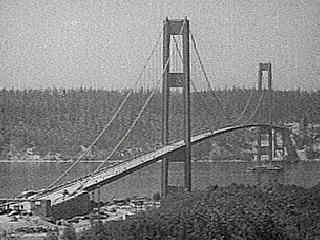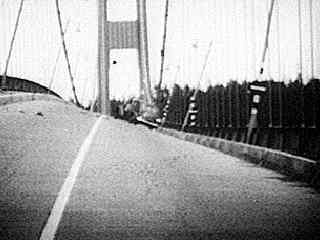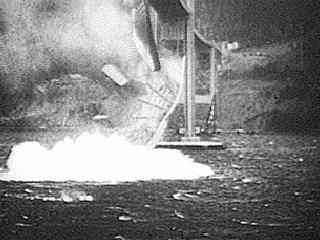Forgetting Failure
Today, we face the ghost of yesterday's bridge failure. The University of Houston's College of Engineering presents this series about the machines that make our civilization run, and the people whose ingenuity created them.
In his fine book on design failures, Henry Petroski hits us with this remark:
The paradox of engineering design is that successful ... concepts devolve into failures, while the colossal failures contribute to the evolution of ... inspiring structures.
He uses the collapse of the Tacoma Narrows Bridge to make his point. The Tacoma Narrows Bridge was finished in 1940. That was 57 years after the Brooklyn Bridge capped off John Roebling's brilliant career as the creator of modern suspension bridges. For two generations, one suspension bridge triumph after another fed growing overconfidence.
The Tacoma Narrows Bridge was then the third longest suspension bridge in the world. But its designers had done something they hadn't done before. The bridge was only two lanes wide -- not meant for heavy traffic. So they used light construction. The finished bridge was spectacular -- really spectacular -- a delicate buoyant structure that seemed to hang in the air like a giant spider web. It seemed plenty strong enough. The structural design of bridges was well worked out by then. But it was also more flexible than the ones before it. After all, wasn't it good to be strong like a willow tree?
And so the bridge immediately picked up its nickname, Galloping Gertie. Driving across it in any kind of wind turned into a roller-coaster ride. Four months after it opened, a higher wind than usual blew down through the Narrows. This day, as the Bridge danced in the wind, it turned into a kind of mad dervish. The road was closed, and movie cameras were brought up to record what was to be the most famous bridge collapse of all time.
After that, bridge designers quickly learned how to cope with the aerodynamic forces they'd been ignoring for years. And we haven't seen another failure like that one since.
But aerodynamic failures weren't new when the Tacoma Bridge went down. Engineers had simply let themselves forget the past. 86 years earlier, in 1854, the longest suspension bridge in the world spanned the Ohio River at Wheeling, West Virginia. It was five years old when it failed. The Wheeling Intelligence reported the failure:
... we saw ... the whole structure heaving and dashing [in the wind] with tremendous force. For a few moments we watched it with breathless anxiety, lunging like a ship in a storm; at one time it rose to nearly the height of the tower, then fell and twisted and writhed. [Then] down went the immense structure from its dizzy height to the stream below with an appalling crash and roar.
And 28 years before that, in 1826, one of the earliest suspension bridges had crashed just the same way in England.
We engineers make a terrible mistake when we forget where we've already been, because history will come back to haunt us.
I'm John Lienhard, at the University of Houston, where we're interested in the way inventive minds work.
(Theme music)
Petroski, H., To Engineer is Human. New York: St. Martin's Press, 1985.



Three stages in the collapse of the Tacoma Narrows Bridge (clipart)